TABLE 1 Baseline demographics and characteristics Baseline
FACE- Q ™ upperlids
FACE- Q ™ eyebrow and forehead Mean
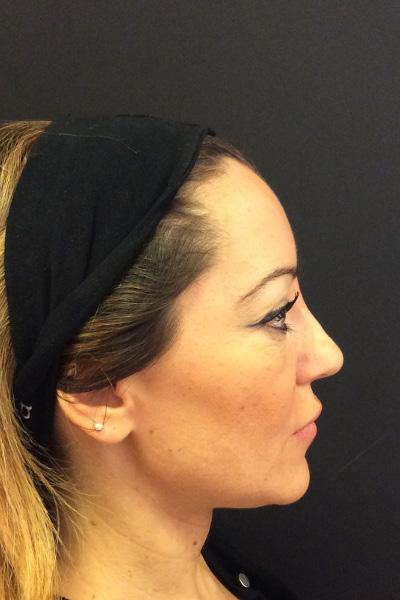
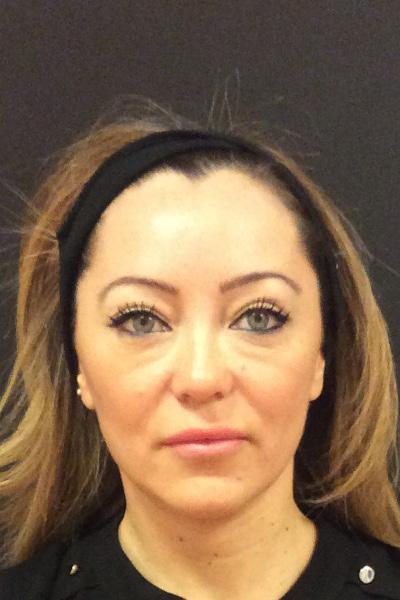
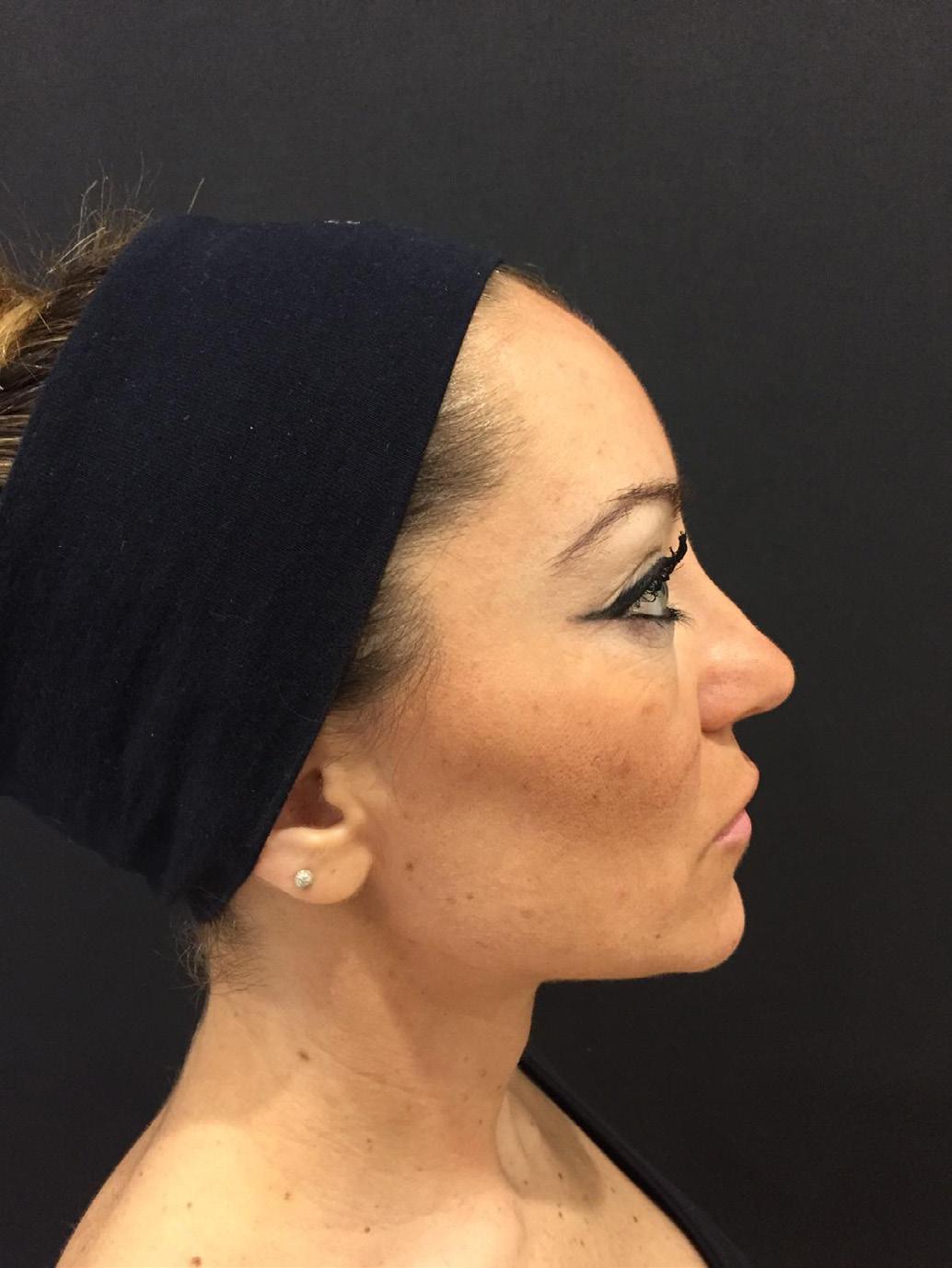
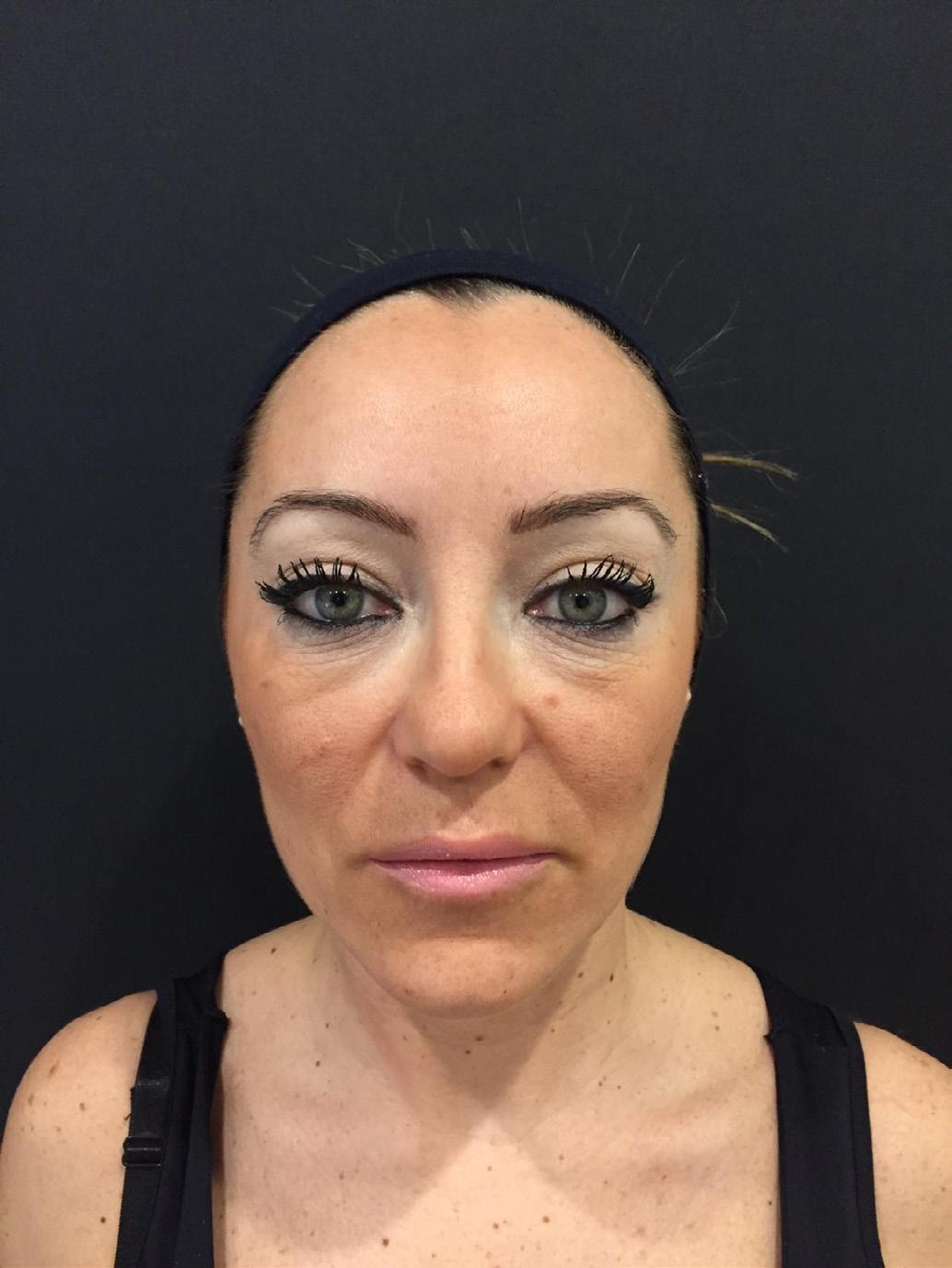
FIGURE 2 Photographs of a 35-year-old woman who underwent eyebrow thread lifting. (A and C) Preoperative photograph. (B and D) Six months following the minimally invasive procedure
thread is inserted with the needle in IN1 at the periosteal plane and follows the second line until the brow tail (OUT2).
The needles are removed, and, with a gentle massage, the drawn lines are eliminated, and the barbs opened. Once opened, these barbs anchor to the overlying tissues and consequently to the brow tail. While keeping the thread still, the brow tail is positioned at the desired place, the symmetries between brows are checked, and the
excess thread is removed. Two sterile stripes are placed in an antigravitational sense and removed after 2 days. Antibiotics are prescribed for 6 days as postoperative care.
2.3 | Assessment

Patient satisfaction was assessed at baseline, 6 and 12 months after the procedure using two self-assessment FACE- Q ™ scales.7 The FACE- Q ™ appraisal of upper lids is a 7-question scale that asks the patient to assess “how droopy, saggy or heavy the eyelids look, as well as how tired or old they make someone look.” 8 The FACE- Q ™ satisfaction with forehead and eyebrows “measures the appearance of the forehead with items that ask about position and height of eyebrows, as well as how youthful and smooth the forehead looks.” 8
2.4 | Statistical analysis
SPSS software (version 17.00, SPSS) was used for statistical analysis. Data are presented as mean, SD, number, or percent. Comparisons between baseline and other time points were performed using unpaired-samples t-test. A value of p < 0.05 was considered statistically significant.
3 | RESULTS
We performed eyebrow thread lifting in 38 female patients (mean age, 35.5, Table 1). All patients were treated with botulin toxin injections 2 weeks before the procedure. Representative images of preand post-treatment are presented in Figures 2–4.
At baseline, patients were not satisfied with their gaze and forehead as seen by low FACE-Q ™ scores (mean FACE-Q™ upperlids 10.29 +/− 2.18, FACE-Q ™ eyebrow and forehead 10 +/− 2.46). At the 6month follow-up visit, a statistically significant increase from baseline was seen (mean FACE-Q™ upperlids 21.21 +/− 3.56, FACE-Q ™ eyebrow and forehead 20.66 +/− 2.37, p < 0.0001, Figure 5). The observed improvement was maintained at the last follow-up, although overall mean scores were slightly decreased compared with 6 months (12 months; mean FACE-Q ™ upperlids 18.05 +/− 3.20, FACE-Q TM eyebrow and forehead 18.13 +/−3.73, p < 0.001). Of note, subgroup analysis showed that mean 12-month FACE-Q ™ eyebrow and forehead scores were higher in patients under 40 years old (Figure 6).
No serious complications were seen. Minor complications occurred only in two patients (hematoma, minor extrusion). Both were resolved within 14 days.
4 | DISCUSSION
Here, we show the outcome of eyebrow lifting using barbed threads in 38 patients that came to our clinic to improve their gaze. The
FIGURE 3 Photographs of a 46-yearold woman who underwent eyebrow thread lifting. (A and C) Preoperative photograph. (B and D) Six months following the minimally invasive procedure

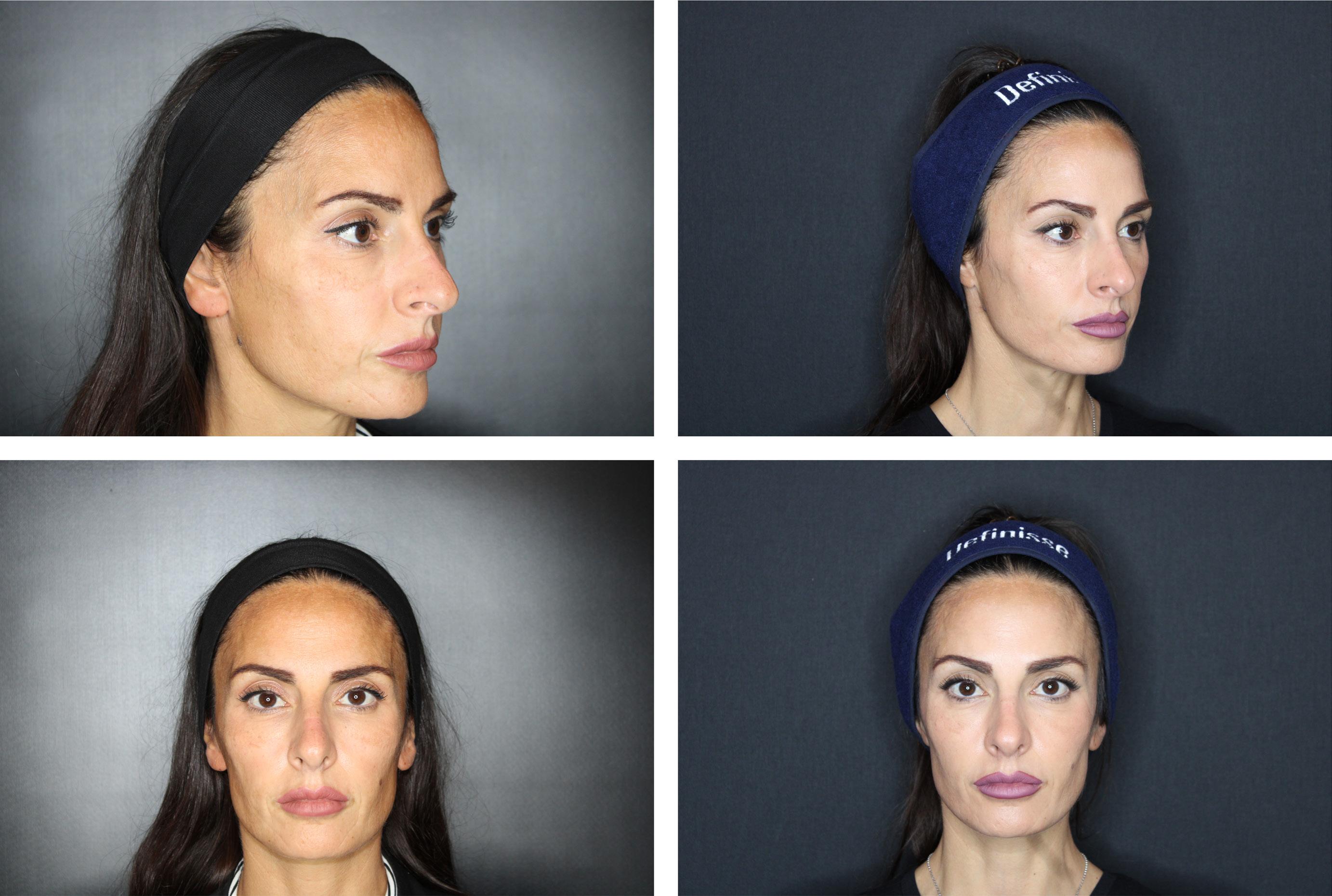
FIGURE 4 Photographs of a 44-yearold woman who underwent eyebrow thread lifting. (A and C) Preoperative photograph. (B and D) Six months following the minimally invasive procedure
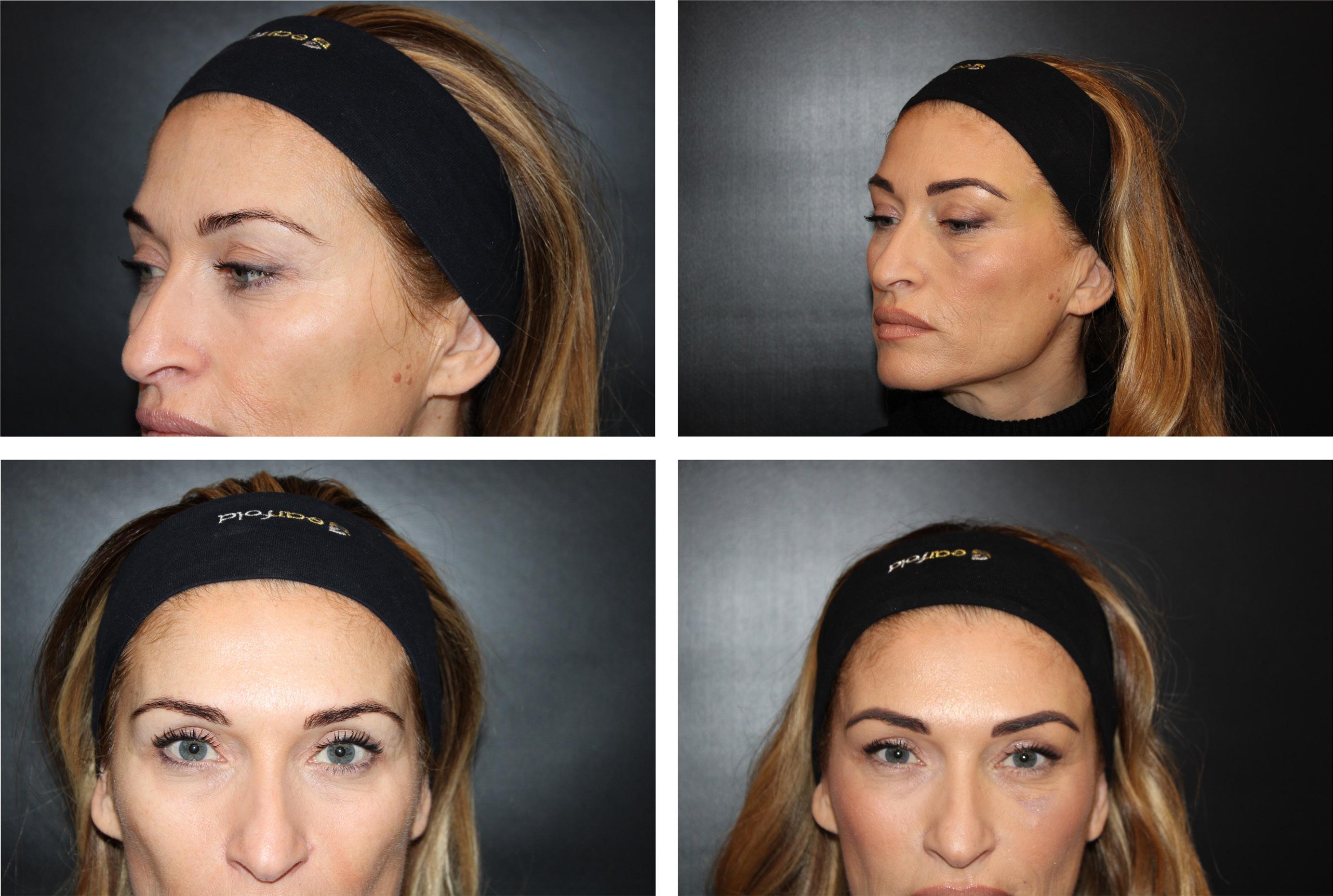
procedure was minimally invasive, and no complications were observed during treatments. Furthermore, patients were satisfied with the intervention since the results obtained correspond to their desire of having a more beautiful and younger gaze. Satisfaction with treatment was confirmed by an increase in mean FACE- Q ™ scores that lasted for the entire follow-up (12 months).
Brow ptosis is an inevitable and multifactorial event. It may occur due to orbital bone resorption that leads to tissue dropping. In other cases, it is due to hypertrophy of the orbicular muscle of the eye whose attachment to the brow tail pushes it downwards. In addition, some people develop tissue sagging over the years. All these factors combined determine the severity of the brow ptosis.9,10 Various strategies are available to restore eyebrow position. Choice of treatment should be based on patient preferences and characteristics.
Treatment with fillers is appropriate for reintegrating the resorbed bone, and preference should be given to high G prime fillers for optimal results. Botulinum toxin may be used to decentralize the hyperkinetic orbital. However, if the patient shows saggy eyebrows, thread lifting should be the gold-standard treatment. Similarly, in patients who have already used fillers and botulinum toxin without satisfying results and do not want to undergo surgery, brow lifting with barbed threads is a good choice. Indeed, due to its minimally invasive nature and absence of complications, thread lifting allows for easily repositioning the brow arch and tail. For these reasons, it is also the best choice for patients who, for aesthetic reasons and in the absence of ptosis, aim to improve their gaze. Benslimane and colleagues have shown that better positioning the brow arch and tail opens the gaze with incredible esthetic results.1
